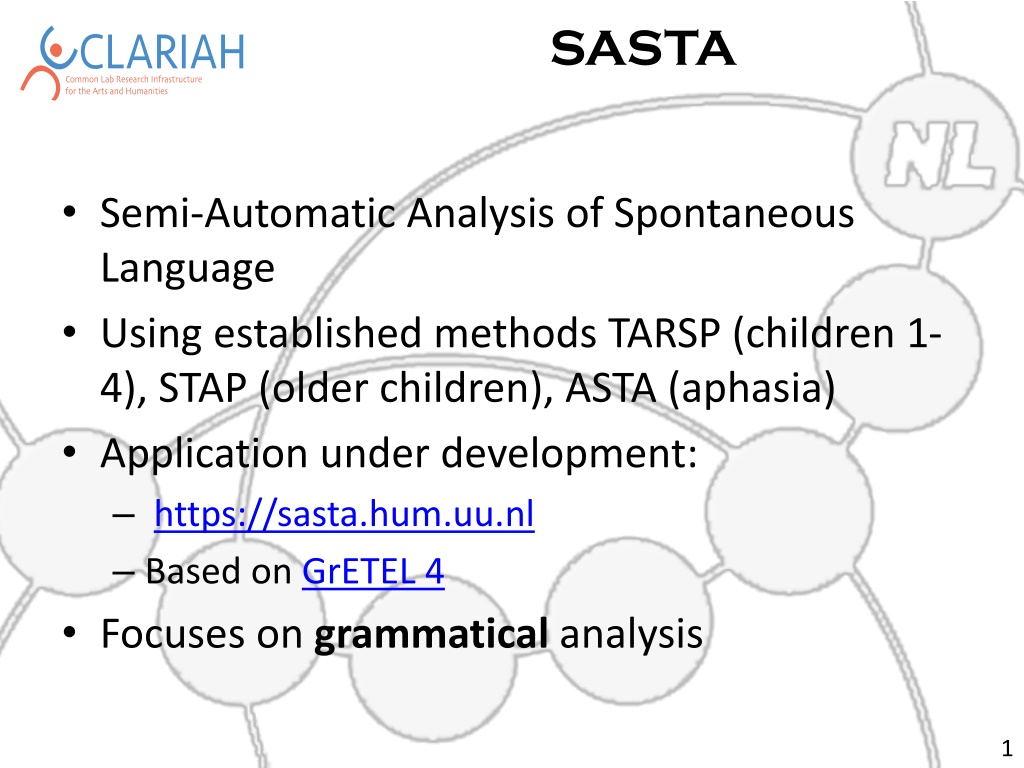SASTA: Semi-Automatic Analysis of Spontaneous Language
Application development for linguistic analysis using established methods like TARSP, STAP, and ASTA. Focuses on grammatical analysis, comparing results to normative figures. Shows promise in linguistic assessment, with potential societal impact.
Download Presentation

Please find below an Image/Link to download the presentation.
The content on the website is provided AS IS for your information and personal use only. It may not be sold, licensed, or shared on other websites without obtaining consent from the author. Download presentation by click this link. If you encounter any issues during the download, it is possible that the publisher has removed the file from their server.
E N D
Presentation Transcript
SASTA Semi-Automatic Analysis of Spontaneous Language Using established methods TARSP (children 1- 4), STAP (older children), ASTA (aphasia) Application under development: https://sasta.hum.uu.nl Based on GrETEL 4 Focuses on grammatical analysis 1
SASTA Methods: TARSP, STAP and ASTA Define language measures E.g. occurrence of certain word classes, # nouns, # compound nouns, # diminutives, # verbs, # finite verbs, # copulas, Constructions Auxiliary + infinitive, adjective used attributively, Inversion, subordinate clauses, coordination, Derive scores and compare these to normative figures 2
SASTA Results: Reasonable (full details in full presentation) Sometimes better than human experts (recall) Human experts better w.r.t. precision Good enough? (to be investigated) Relation with CLARIN Based on CLARIN application GrETEL Societal impact May benefit CLARIN (derivative CHAMP-NL) 3
SASTA Deviant language abundantly present errors, hesitations, false starts, Decreases scores for grammatical analysis Important factor in assessment Can we detect and analyse deviant lg automatically? Small experiment: recall 2 percent point increase Now integrating Successor project SASTA+ 4

























